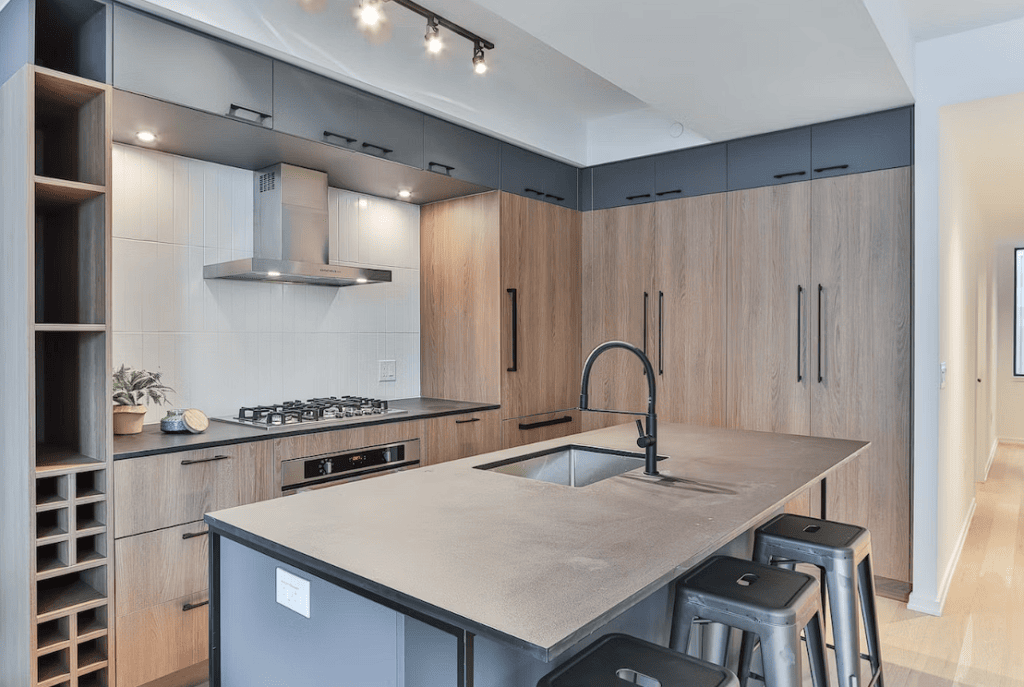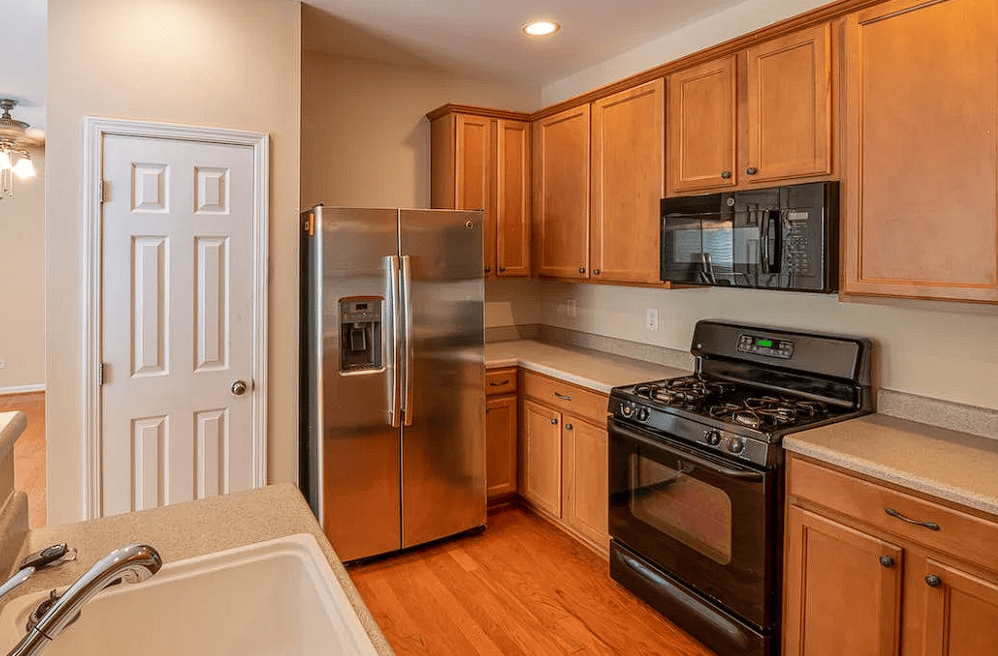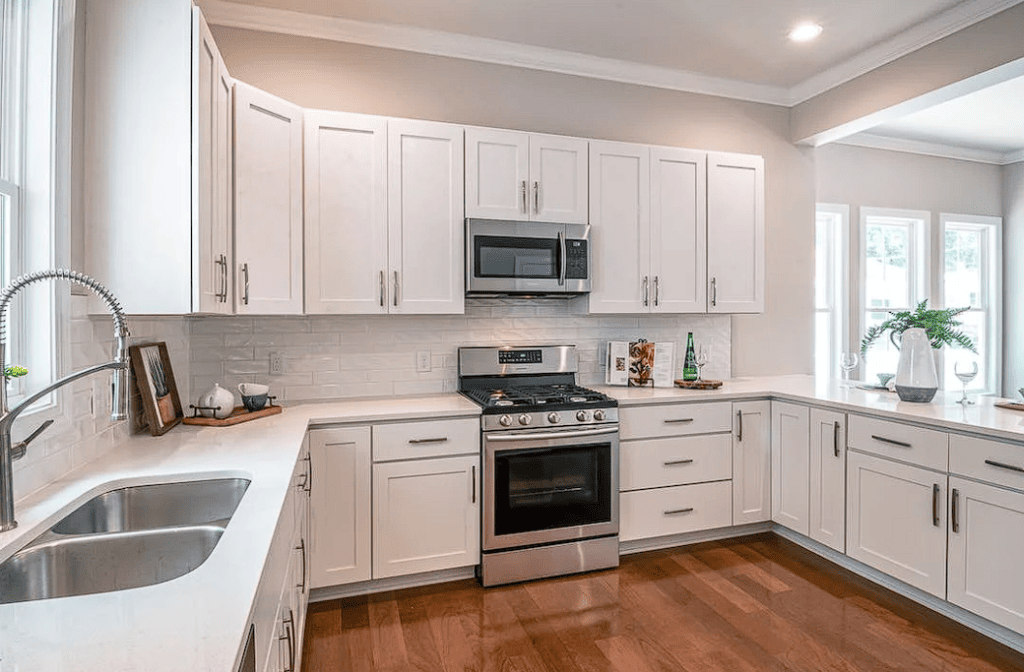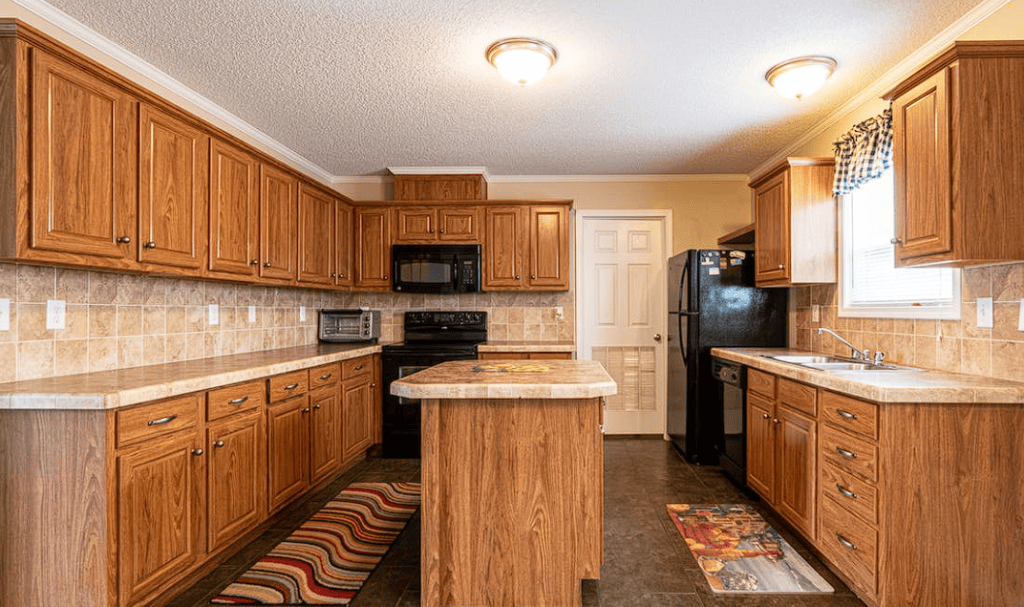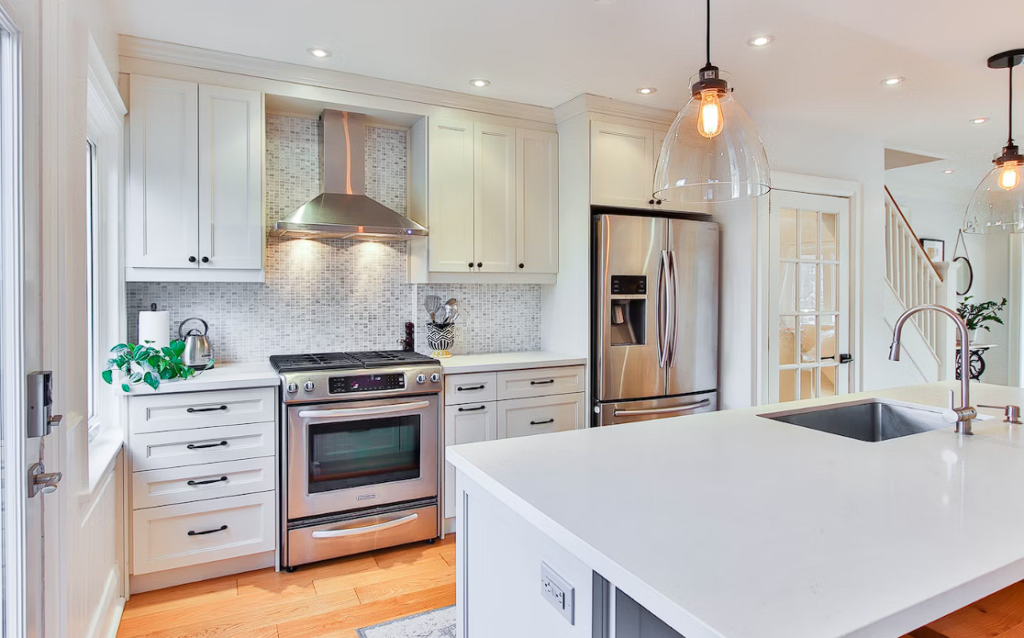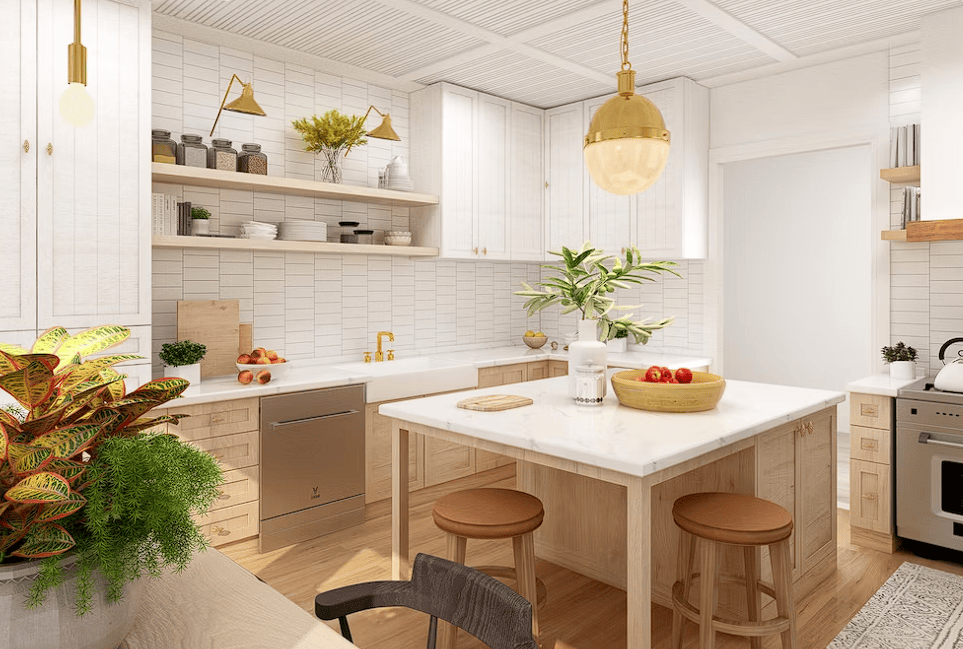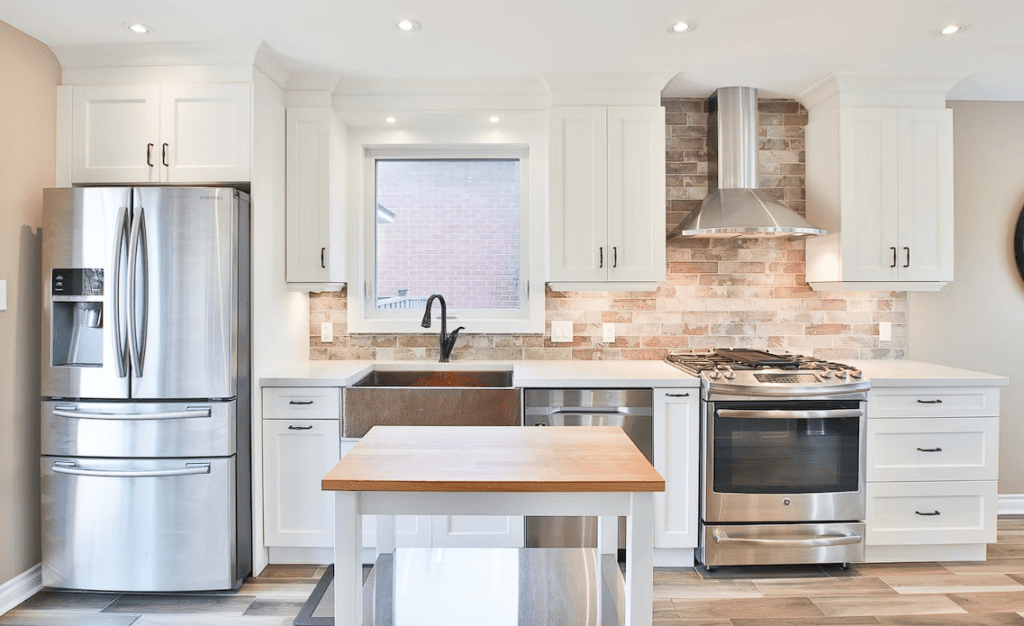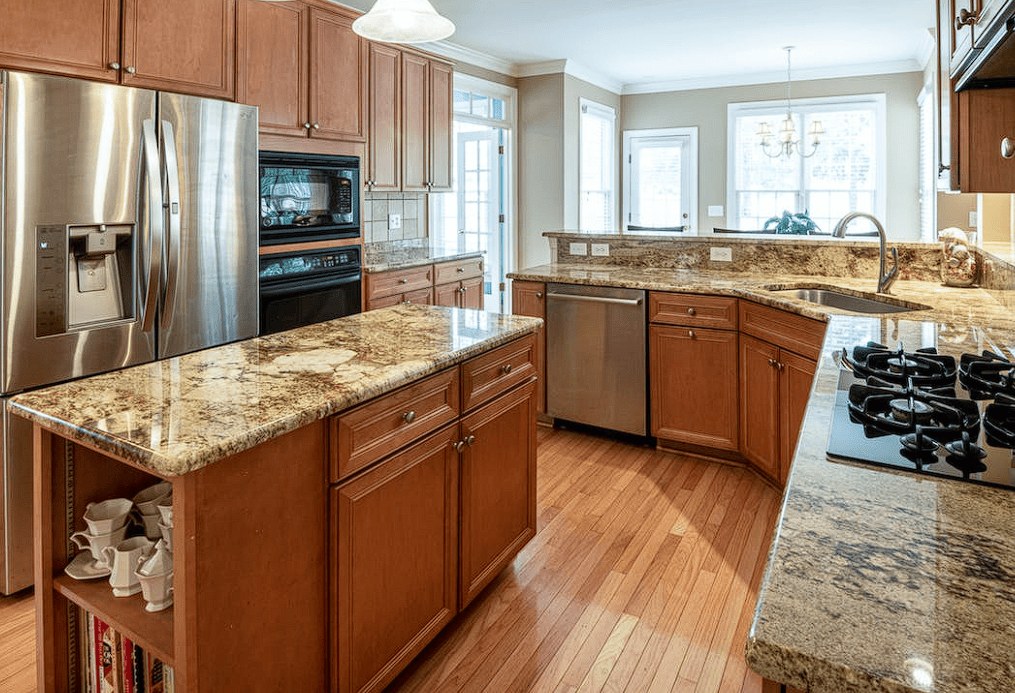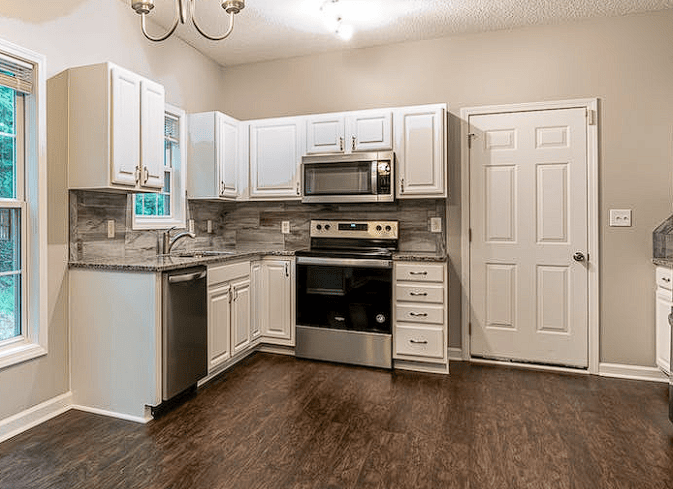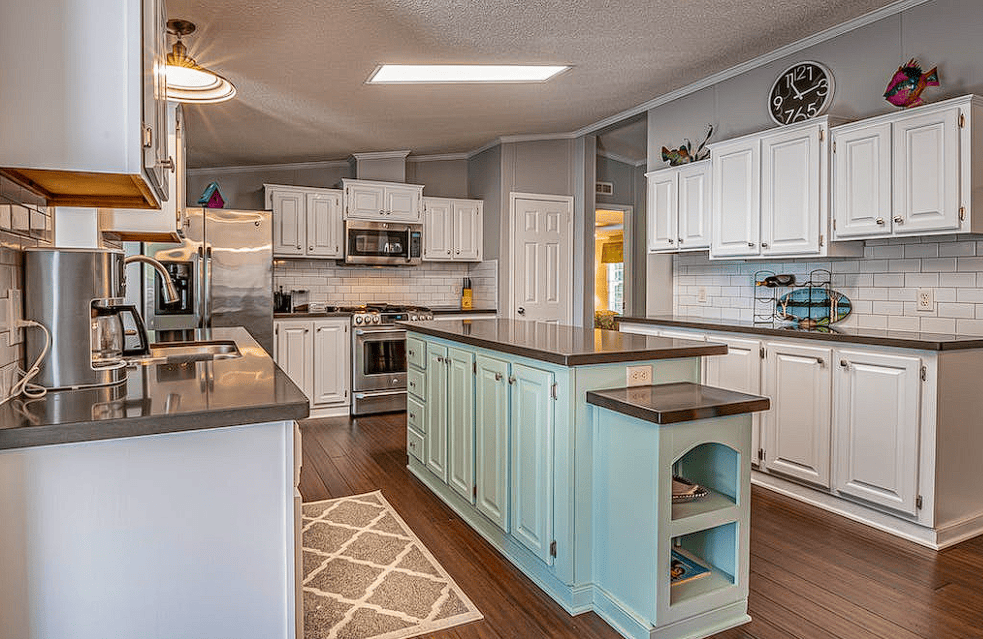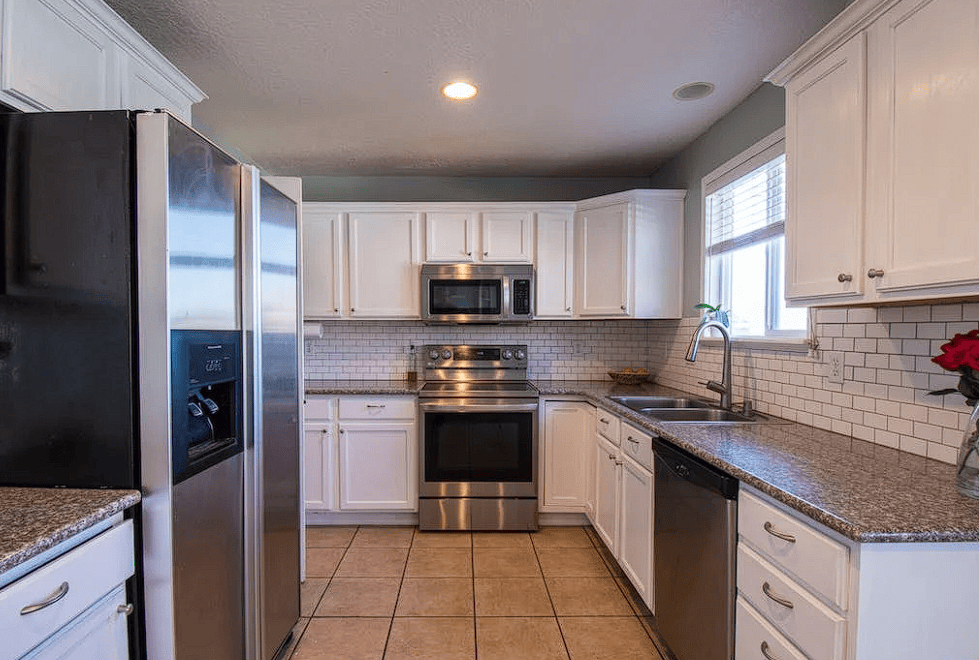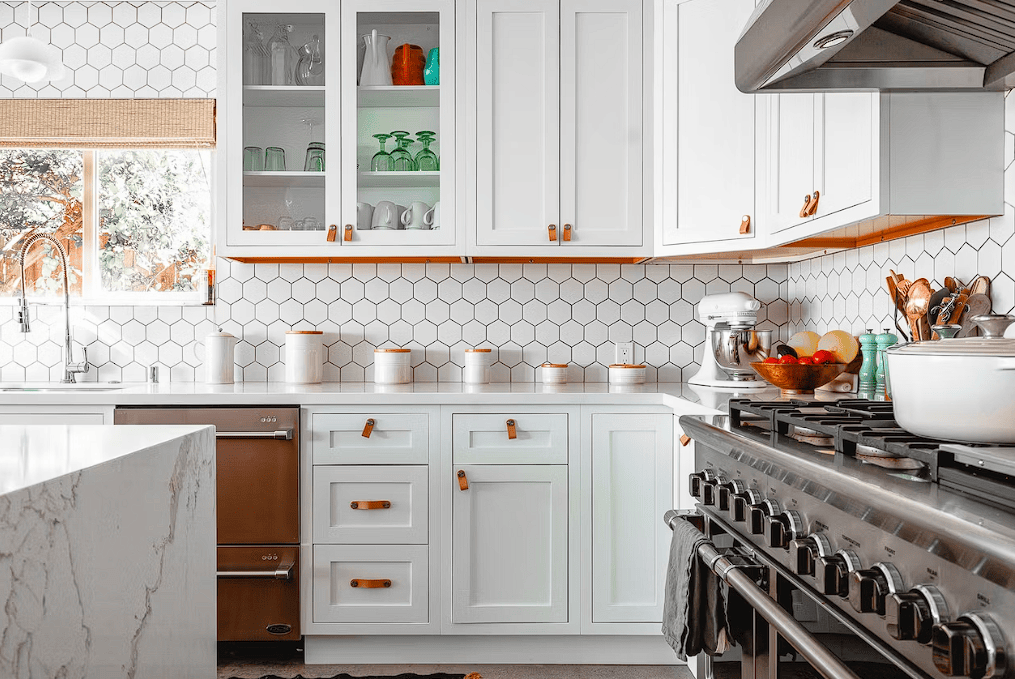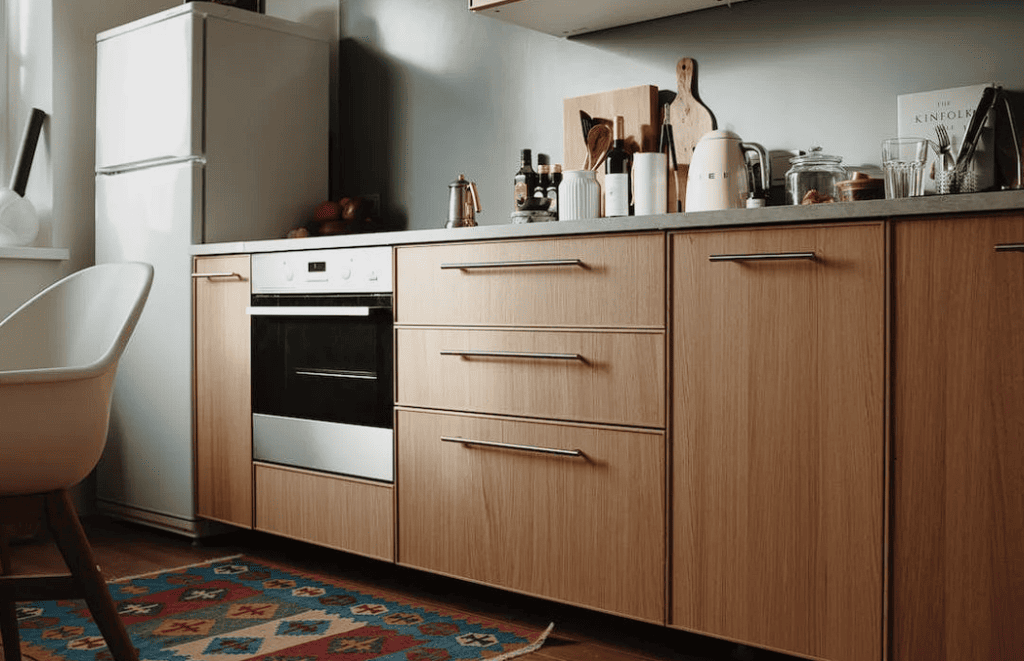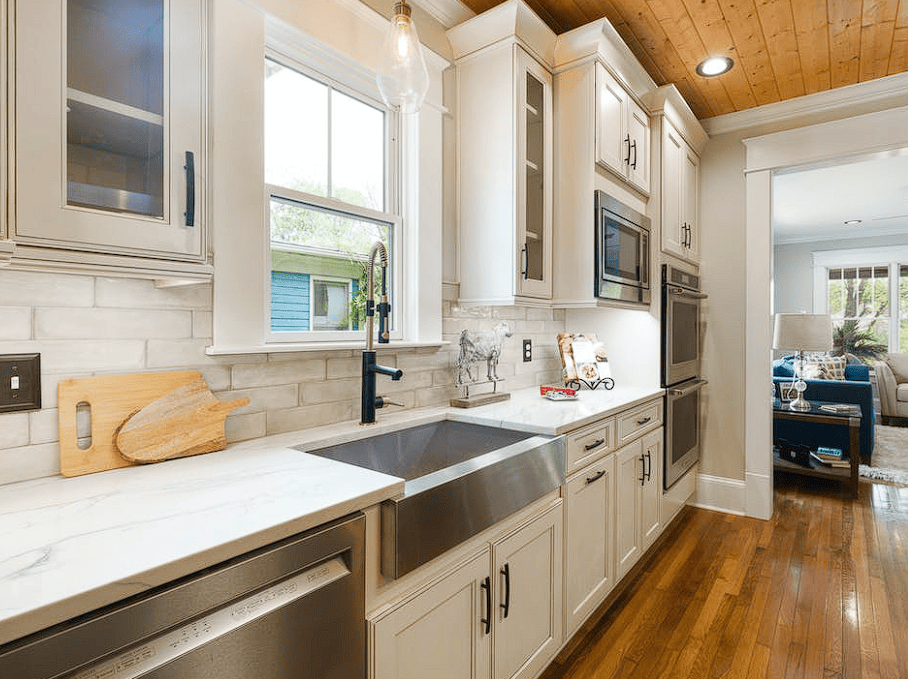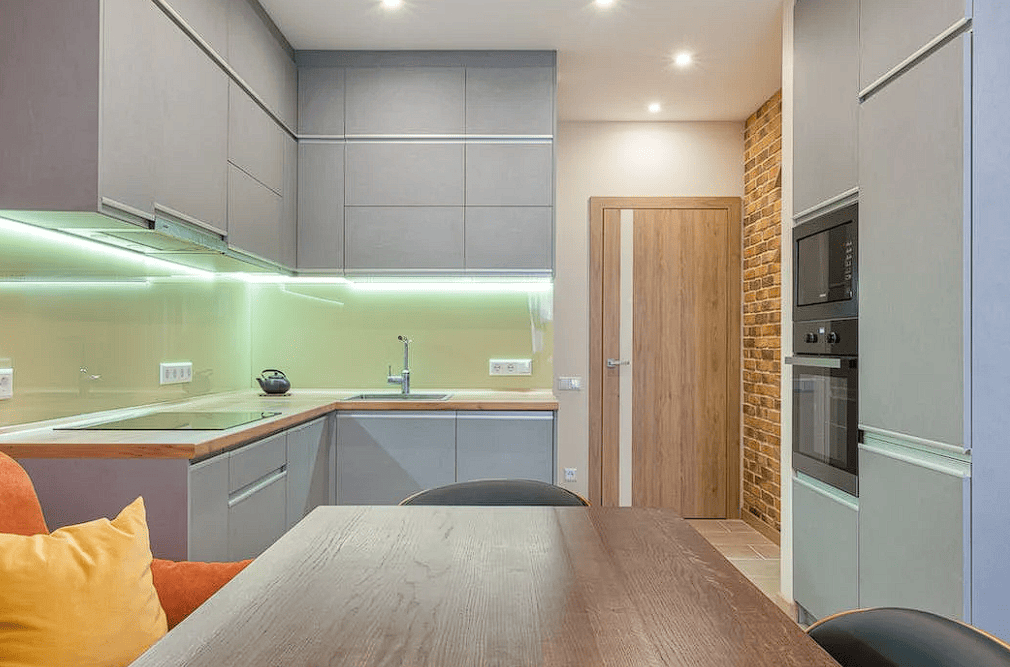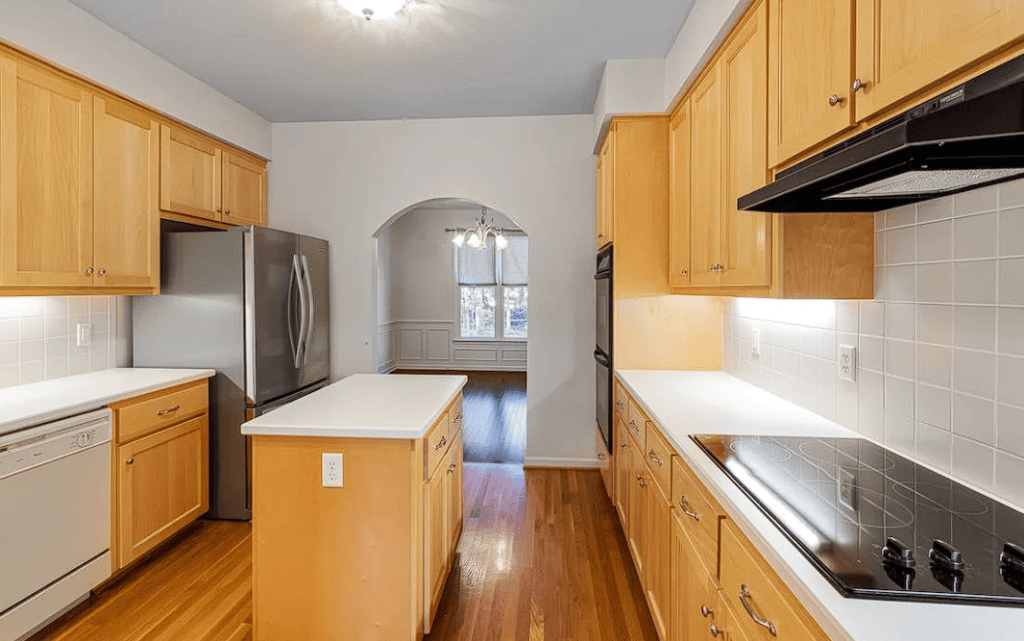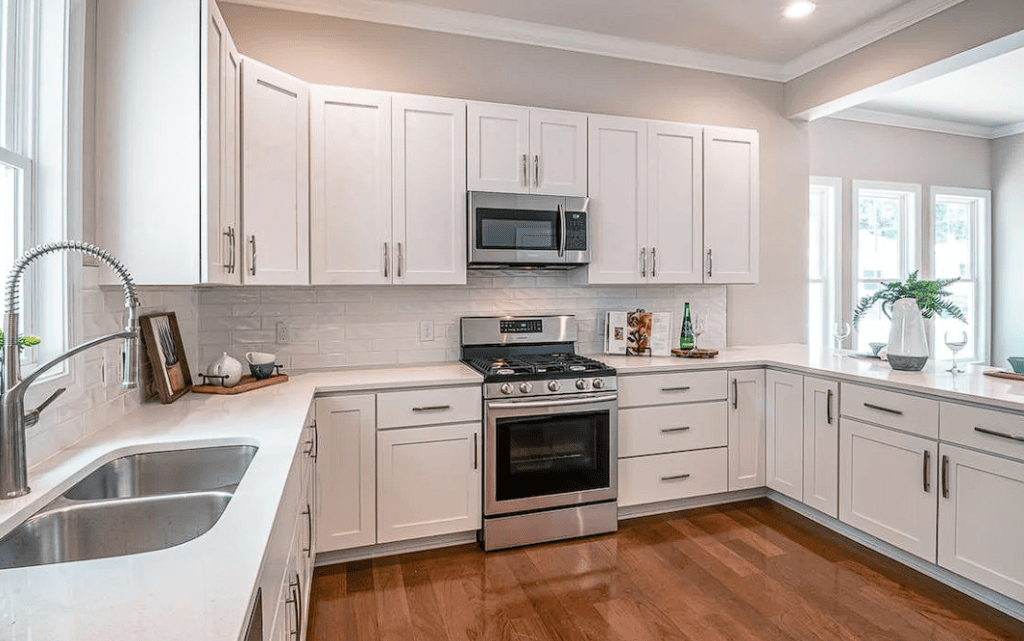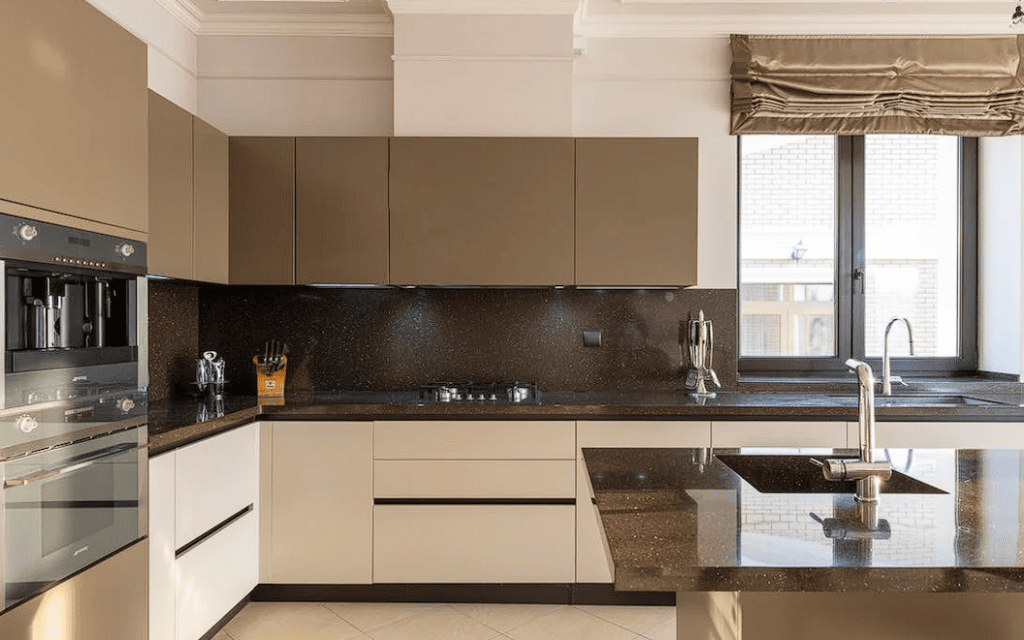Sustainable kitchen cabinets are cabinets that are both environmentally and socially responsible, with the goal of minimising the negative effects of cabinet manufacturing and disposal. These cupboards are manufactured in an environmentally friendly manner and made from renewable resources like bamboo or recycled wood. The advantages of eco-friendly kitchen cabinets are discussed here.
What Makes A Material Environmentally Friendly?
You have probably heard of phrases like "green," "eco-friendly," and "environmentally friendly." Since many global industries, including the energy and automotive sectors, are adopting greener methods, the term has entered common usage.
What does it mean when these terms are used interchangeably, and what are the distinctions between them?
Something is considered eco-friendly if it has no negative effects on the natural world. Eco-friendly goods don't pollute Earth's soil, atmosphere, or water supply. Water and energy conservation may be additional benefits of these materials and processes.
Additionally, these items can lessen the presence of HAPs and VOCs (Hazardous Air Pollutants).
Responsible sourcing, manufacturing, and transportation are just a few examples of practices and methods that can be used to safely and responsibly extract these materials.
Last but not least, these materials have the potential to be extremely eco-friendly, whether they are manufactured from waste products or renewable resources such as bamboo.
Eco-Friendly Cabinet Materials
There are a variety of environmentally responsible options when it comes to kitchen cabinetry.
Examples of popular natural wood cabinet options that can be made using sustainable sourcing and manufacturing methods include walnut and maple. Although care may have been taken in the products' sourcing and delivery, they are not entirely eco-friendly.
Instead, we'll prioritise cabinet materials like bamboo and MDF, both of which are renewable resources that don't harm the environment. Cabinet box construction using eco-friendly materials will also be discussed.
Benefits Of Environmentally Friendly Custom Cabinet Production
Materials Being Reused
The emphasis on recycling is one of the main benefits of working with a cabinet builder who takes an eco-friendly approach. Your kitchen cabinets and countertops are made from recycled and repurposed materials like aluminium, paper, end-grain bamboo, and wood. This gives your home a one-of-a-kind look while also being environmentally friendly.
Low Energy Requirement
Repurposing materials save energy because they have already gone through the manufacturing process. They can easily be reworked into something else, like new cupboards, a sink, countertops, or flooring. The new cabinets can be constructed with a minimal outlay of time and resources because their constituent parts are likely to be obtained locally.
No Toxic Byproducts
Reusing materials in the construction of custom cabinets can improve indoor air quality. Using eco-friendly materials eliminates the risk of harmful off-gassing from the material, as it is made with no toxic chemicals. Some homeowners may not be aware that formaldehyde and other toxins may be released into the air slowly over time from certain building materials, causing health problems for those who are especially sensitive.
Better for your health and the environment as a whole, reusing recycled materials from years past ensures that the toxic fumes have long since dissipated. You can help improve air quality wherever you are in the world.
Sustainable Harvesting Practices
Cabinet makers often use wood when designing bespoke cabinetry for clients. However, for those who worry about cutting down too many trees to make an entire set of cabinets out of hardwood, there are a number of other options to consider. If this describes you, consider discussing wood veneer, salvaged wood, or bamboo with your custom cabinet designer. There isn't a bad option among these.
Reclaimed wood is an excellent sustainable resource because there is a virtually infinite supply. It also adds a style to your home that no other wood can match. Wood veneer, a thin slice of wood adhered to a substrate, can give the impression of wooden cabinets without the use of as much hardwood. Finally, bamboo is rapidly renewable because of how quickly it grows. Because of its superior strength to that of most other hardwoods, it is an excellent, long-lasting choice for your eco-friendly cabinetry.
Durable and Low Maintenance
The recycled cabinets and countertops you get when you work with a custom cabinet company are extremely durable and require little in the way of upkeep, which is perhaps the greatest benefit of all. In contrast to more delicate materials like granite or hardwood, these can be cleaned with just about anything. When a spill occurs, simply wipe away the stain from aluminium, recycled wood, or bamboo. To clean them, just spray them down with an all-purpose cleaner, wet a washcloth, and wipe them down with a towel. Your kitchen is spotless and eco-friendly.
Eco-Friendly Cabinets For Your Kitchen
Bamboo Cabinets
Bamboo makes not only lovely cabinetry but also excellent flooring. The wood can be harvested quickly and is much harder and stronger than other types of hardwood. These cabinets are typically formaldehyde-free and can give your kitchen a one-of-a-kind look due to their unusual but attractive grain. Bamboo not only improves indoor air quality but also regenerates in under a decade.
Lyptus Cabinets
Lyptus, a hybrid eucalyptus species, is a product of bioengineering and another renewable resource. It only takes about 15 years to grow to maturity, which is about half the time it takes for most hardwood options to reach maturity. Better yet, it can regrow itself from the remnants of cut trees. Its appearance and feel are intermediate between Mahogany and Red Oak, and it accepts stains uniformly. They come in a wide variety of hues, from pale pink to deep earth tones.
Salvaged or Reclaimed Wood Cabinets
There is a subtle distinction between salvaged and reclaimed, but both terms are used interchangeably by decorators. In contrast to salvaged wood, which is returned to its original condition, reclaimed wood has been used in the construction of buildings in the past. Both choices can give a kitchen a lot of personality and history. Applying a nice stain and a non-toxic wood sealer will help you create a beautiful and eco-friendly cooking space.
Formaldehyde-Free Cabinets
One of the most crucial qualities of a cabinet is that it does not contain formaldehyde. Fiberboard, plywood, and particleboard are frequently used by woodworkers for cabinet construction and interior box construction; all three of these materials are bonded with formaldehyde. You should avoid any cabinets that contain this substance because of its classification as a carcinogen. To be truly eco-friendly, choose cabinets with no added formaldehyde and very low or no VOCs.
Kitchen Cabinets Free From Formaldehyde
Human studies have linked exposure to formaldehyde with an increased risk of developing cancer. Glues and adhesives used on furniture and in the home frequently contain this substance. Worse, it's probably close to your food and spread out all over the house. Kitchen cabinets, countertops, and other furniture in our home all contain formaldehyde, which is a chemical.
Formaldehyde is converted to formalin when it comes into contact with water. The mortuary, the hospital, and the hospital lab all use formalin as a preservative and disinfectant. Thankfully, businesses today are listening to customers' desires and producing eco-friendly kitchen cabinets that can be purchased by anyone. In order to make greener and healthier products, they are revamping their business model and doing away with the old notion of profit.
The kitchen manufacturer has switched to using cabinets made without formaldehyde and other potentially harmful substances.
Improving Air Quality with Eco-Friendly Kitchen Cabinets
As a result of this sea change in the standards for kitchen furniture, bamboo, for instance, is a popular choice for kitchen cabinetry because of the positive associations it has with health and vitality in the home.
Bamboo is widely recognised as a chemical-free alternative to conventional kitchen cabinetry. Because it's so simple to grow and gather, it never runs out and can be used indefinitely.
In addition, the use of bamboo in construction has been shown to increase indoor air quality. Toxins like formaldehyde, benzene, carbon monoxide, xylene, and chloroform are cleansed. A fresher, healthier environment in your home is as close as your colourful new kitchen cabinet.
First Eco-Friendly Kitchen Cabinet: Aluminium And Glass
Eco-friendly materials in the kitchen cabinet industry are now thriving and exciting thanks to the pioneering work of Italian kitchen manufacturers who developed these breakthroughs.
The low-energy consumption and low-material requirements of aluminium and glass construction make it both cost-effective and long-lasting. It serves as a model for the growing movement of health-conscious, environmentally-conscious advocates and business owners. It also evolved into a new way of life for professionals in the kitchen appliance manufacturing sector.
Upcycled Wood: To Kitchen Cabinet
Used items are instantly disregarded without any thought given to their condition. However, we owe a debt of gratitude to the creative spirits who gave form to the eco-friendly aspirations of both individuals and businesses through the conception and actualisation of new uses for recycled wood. In order to salvage usable wood for use in manufacturing new kitchen cabinets, they devised a methodical and scientific procedure.
It's cheaper than newly made kitchen cabinets and doesn't hurt the environment in any way. And now, the term recycling has graduated to a new level and dimension, entering the culinary realm, where it is used for more than just plastic and other recyclables.
Conclusion
Sustainable kitchen cabinets are cabinets that are mindful of both the environment and the community, with the intention of reducing waste and other unintended consequences. They are produced in a sustainable fashion and utilise renewable materials like bamboo or repurposed wood. Eco-friendly kitchen cabinets have many benefits, such as reducing your carbon footprint, saving money on utilities, and protecting your family from harmful chemicals. Aluminium, paper, end-grain bamboo, and wood are just some of the recycled materials incorporated into the construction of this house, lending it a one-of-a-kind style while also being kind to the earth. Custom cabinetry that incorporates recycled materials can save waste and boost IAQ.
Since there are no toxic ingredients in its production, it also avoids the possibility of dangerous off-gassing. Wood veneer, reclaimed wood, and bamboo are also viable options for crafting eco-friendly cabinetry. Wood veneer is a thin slice of wood glued to a substrate, whereas reclaimed wood is a great renewable resource that also adds visual appeal to a home. In comparison to other hardwoods, bamboo is both much stronger and far more rapidly regenerated. The most critical information presented here is that recycled cabinets and worktops are long-lasting and low-maintenance, and that bamboo cabinets are normally formaldehyde-free and can give a kitchen a one-of-a-kind look due to their peculiar but appealing grain.
Cabinet eucalyptus, or lyptus, is a hybrid eucalyptus species that can regenerate from tree stumps. Cabinets made from salvaged or reused wood provide character and history to a kitchen, but they shouldn't have any formaldehyde in them. Kitchen cabinets that are safer for the environment and your family are now commercially available. Because of its reputation for promoting health and vitality, bamboo is increasingly being used for kitchen cabinetry. It takes little effort to cultivate and harvest, and it has an infinite useful lifespan.
Formaldehyde, benzene, carbon monoxide, xylene, and chloroform are just some of the pollutants that bamboo construction can remove from the air. Aluminium and glass are only two examples of the sustainable materials that Italian kitchen designers have devised. New kitchen cabinets manufactured from upcycled wood are more cost-effective than those made from raw materials and have a smaller environmental impact. More materials than only plastic and paper can be recycled today.
Content Summary
- Sustainable kitchen cabinets are cabinets that are both environmentally and socially responsible, with the goal of minimising the negative effects of cabinet manufacturing and disposal.
- These cupboards are manufactured in an environmentally friendly manner and made from renewable resources like bamboo or recycled wood.
- The advantages of eco-friendly kitchen cabinets are discussed here.
- There are a variety of environmentally responsible options when it comes to kitchen cabinetry.
- Examples of popular natural wood cabinet options that can be made using sustainable sourcing and manufacturing methods include walnut and maple.
- Cabinet box construction using eco-friendly materials will also be discussed.
- The emphasis on recycling is one of the main benefits of working with a cabinet builder who takes an eco-friendly approach.
- Repurposing materials save energy because they have already gone through the manufacturing process.
- The new cabinets can be constructed with a minimal outlay of time and resources because their constituent parts are likely to be obtained locally.
- Reusing materials in the construction of custom cabinets can improve indoor air quality.
- Using eco-friendly materials eliminates the risk of harmful off-gassing from the material, as it is made with no toxic chemicals.
- Better for your health and the environment as a whole, reusing recycled materials from years past ensures that the toxic fumes have long since dissipated.
- You can help improve air quality wherever you are in the world.
- However, for those who worry about cutting down too many trees to make an entire set of cabinets out of hardwood, there are a number of other options to consider.
- If this describes you, consider discussing wood veneer, salvaged wood, or bamboo with your custom cabinet designer.
- Reclaimed wood is an excellent sustainable resource because there is a virtually infinite supply.
- It also adds a style to your home that no other wood can match.
- Wood veneer, a thin slice of wood adhered to a substrate, can give the impression of wooden cabinets without the use of as much hardwood.
- Because of its superior strength to that of most other hardwoods, it is an excellent, long-lasting choice for your eco-friendly cabinetry.
- The recycled cabinets and countertops you get when you work with a custom cabinet company are extremely durable and require little in the way of upkeep, which is perhaps the greatest benefit of all.
- When a spill occurs, simply wipe away the stain from aluminium, recycled wood, or bamboo.
- These cabinets are typically formaldehyde-free and can give your kitchen a one-of-a-kind look due to their unusual but attractive grain.
- Applying a nice stain and a non-toxic wood sealer will help you create a beautiful and eco-friendly cooking space.
- One of the most crucial qualities of a cabinet is that it does not contain formaldehyde.
- Human studies have linked exposure to formaldehyde with an increased risk of developing cancer.
- Glues and adhesives used on furniture and in the home frequently contain this substance.
- Kitchen cabinets, countertops, and other furniture in our home all contain formaldehyde, which is a chemical.
- Formaldehyde is converted to formalin when it comes into contact with water.
- The mortuary, the hospital, and the hospital lab all use formalin as a preservative and disinfectant.
- Thankfully, businesses today are listening to customers' desires and producing eco-friendly kitchen cabinets that can be purchased by anyone.
- The kitchen manufacturer has switched to using cabinets made without formaldehyde and other potentially harmful substances.
- As a result of this sea change in the standards for kitchen furniture, bamboo, for instance, is a popular choice for kitchen cabinetry because of the positive associations it has with health and vitality in the home.
- Bamboo is widely recognised as a chemical-free alternative to conventional kitchen cabinetry.
- In addition, the use of bamboo in construction has been shown to increase indoor air quality.
- A fresher, healthier environment in your home is as close as your colourful new kitchen cabinet.
- Eco-friendly materials in the kitchen cabinet industry are now thriving and exciting thanks to the pioneering work of Italian kitchen manufacturers who developed these breakthroughs.
- The low-energy consumption and low-material requirements of aluminium and glass construction make it both cost-effective and long-lasting.
- It serves as a model for the growing movement of health-conscious, environmentally-conscious advocates and business owners.
- It also evolved into a new way of life for professionals in the kitchen appliance manufacturing sector.
- Used items are instantly disregarded without any thought given to their condition.
- However, we owe a debt of gratitude to the creative spirits who gave form to the eco-friendly aspirations of both individuals and businesses through the conception and actualisation of new uses for recycled wood.
- In order to salvage usable wood for use in manufacturing new kitchen cabinets, they devised a methodical and scientific procedure.
- It's cheaper than newly made kitchen cabinets and doesn't hurt the environment in any way.
- And now, the term recycling has graduated to a new level and dimension, entering the culinary realm, where it is used for more than just plastic and other recyclables.
Frequently Asked Questions
Designing a kitchen that incorporates sustainable materials like stone, granite and wood, is far better for the planet and will give a natural, organic aesthetic. Quartz worktops, like this Angolian Black Quartz, and wooden cabinets are not only sustainable, but long-lasting, durable and offer timeless style.
Electric ovens that are powered by electric energy instead of fossil fuels keep meal times more sustainable. If you love your food as much as I do, cooking less might not be an option, but experimenting with raw foods and salads reduces oven time, even one pot meals uses less energy, washing up and water.
Eco-friendly cabinets are made with materials free of formaldehyde. It can be reclaimed wood, recycled wood, rapidly renewable wood such as bamboo, and FSC certified wood. The glues used are safe and non-toxic and don't off-gas and damage human health.
Sustainable materials management (SMM) is a systematic approach to using and reusing materials more productively over their entire life cycles. It represents a change in how our society thinks about the use of natural resources and environmental protection.
Although often mistaken for a wood, bamboo is in fact a grass; as such, it is sustainable and quickly renewable. Because bamboo grows to maturity within as little as seven years, it is available more rapidly than hardwood, which can take decades to reach the age of harvesting.

